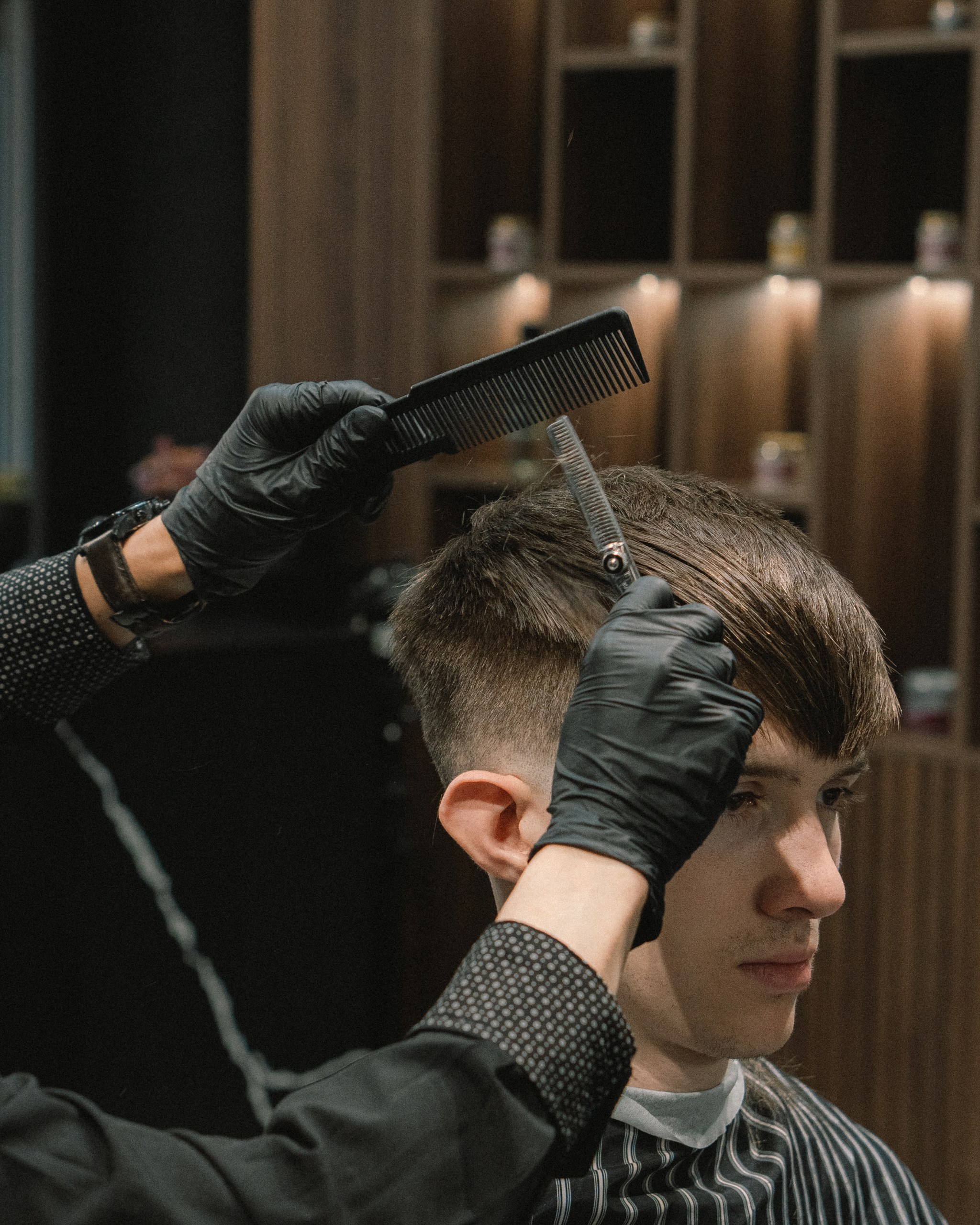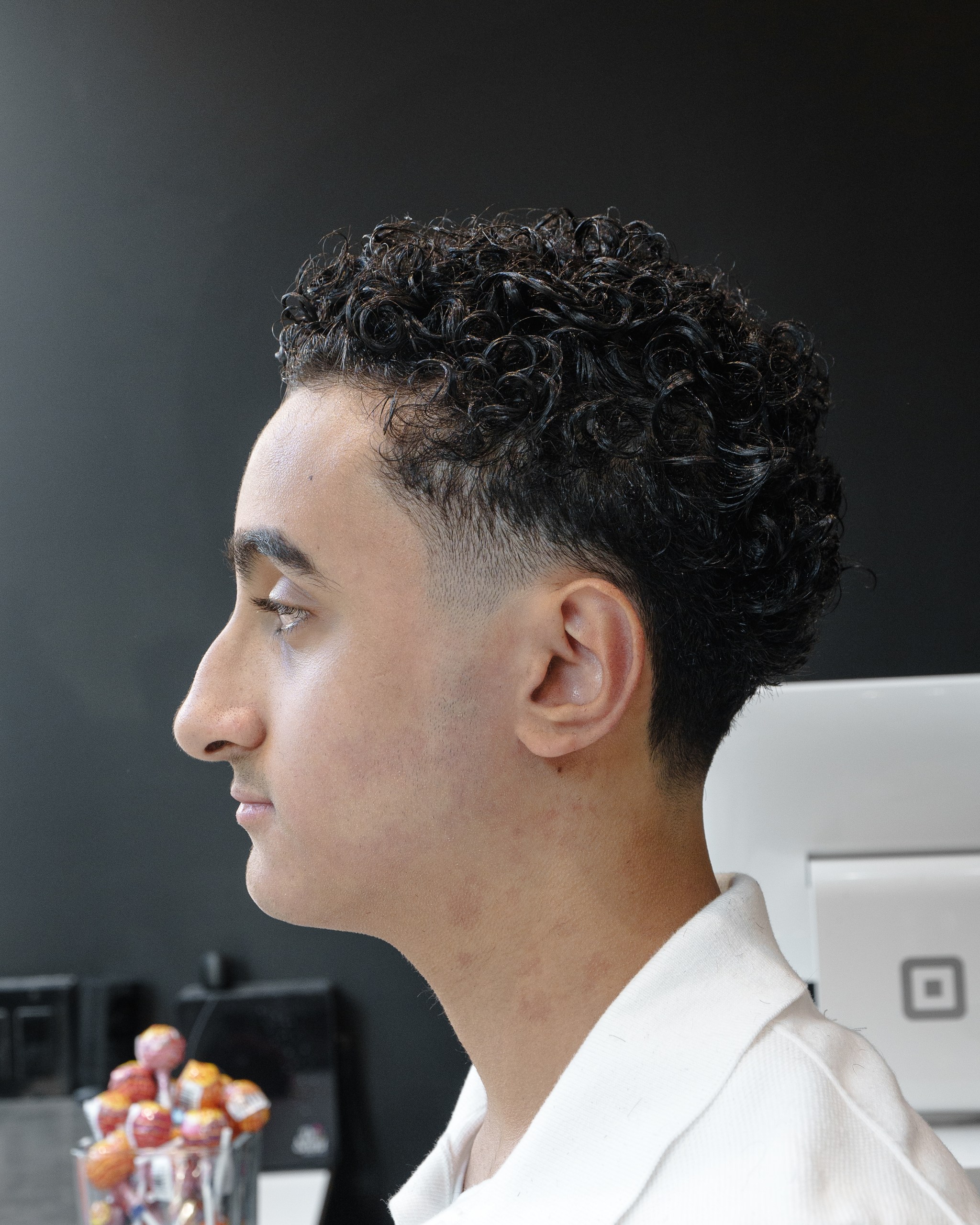Your scalp is like a map with different zones that react completely differently to DHT. Think of it as neighborhoods with different levels of security – some areas are fortified against hormone damage, while others are sitting ducks.
The vulnerability zones: The crown and hairline are packed with follicles that have tons of DHT receptors. These areas are like having multiple unlocked doors – when DHT shows up, it can easily get in and start causing damage. This is why male pattern baldness almost always starts in these specific spots.
The fortress areas: The sides and back of your head are naturally DHT-resistant. These follicles have fewer receptors and different genetic programming that makes them largely immune to hormone attacks. This is why even guys with advanced balding usually keep hair in these areas.
The border zones: Between the vulnerable and resistant areas are follicles with moderate sensitivity. These areas might thin gradually rather than going completely bald, and they often respond better to treatment than the high-vulnerability zones.
The facial hair paradox: Here's the weird part – beard and mustache follicles actually get stronger with more DHT. The same hormone destroying your hairline is making your beard thicker. It's like DHT speaks different languages depending on location.
This geographic sensitivity explains why hair transplants work. Surgeons move DHT-resistant follicles from the back of your head to thinning areas, where they keep growing normally because they maintain their original resistance.
Why Sensitivity Varies So Much Between Men
Two guys can have the same DHT levels but completely different hair loss patterns. The difference comes down to receptor sensitivity and genetic programming.
Receptor density: Some men have follicles packed with DHT receptors, making them extremely vulnerable. Others have fewer receptors and may never experience significant loss. This density pattern is inherited and explains why hair loss runs in families but affects each generation differently.
Enzyme activity: The amount of 5-alpha reductase enzyme you produce (which converts testosterone to DHT) varies dramatically between individuals. High producers create more DHT locally in the scalp, while low producers may maintain normal hair despite high testosterone levels.
Cellular resistance: Even with high DHT and lots of receptors, some follicles are just tougher. They can handle hormone exposure longer before showing damage. This resistance factor is why some men maintain decent hair into their sixties while others start losing it in their twenties.
The timing factor: Sensitivity can change over time. Follicles that handled DHT fine in your twenties might become more vulnerable in your thirties as cellular repair mechanisms slow down.
How DHT Actually Damages Follicles
Understanding the specific damage process helps explain why certain treatments work and others don't.
The binding process: DHT doesn't just randomly damage follicles. It binds to specific androgen receptors inside follicle cells, triggering a cascade of changes that gradually shrink the follicle over months and years.
Miniaturization stages: The damage happens in predictable stages. First, the growth phase shortens. Then hair diameter decreases. Finally, the follicle produces only fine, colorless hair before shutting down completely. This is why thinning often progresses slowly, then seems to accelerate.
Blood flow reduction: DHT binding also reduces blood flow to affected follicles by tightening surrounding tissue. This creates a double hit – hormone damage plus reduced nutrition and oxygen delivery.
Inflammation cascade: DHT triggers inflammatory responses that further damage follicle structure. This inflammation can spread to nearby follicles, potentially accelerating the miniaturization process.
The point of no return: Once a follicle has been completely miniaturized, the damage is permanent. The follicle structure is too damaged to restart normal hair production, which is why early intervention is crucial.
Pattern Prediction: Reading Your DHT Map
Hair loss patterns aren't random – they follow predictable routes based on DHT sensitivity distributions. Learning to read these patterns helps predict future changes.
The classic progression: Most men start with temple recession or crown thinning because these areas have the highest DHT sensitivity. The pattern typically expands from these starting points toward areas of moderate sensitivity.
Family pattern analysis: Look at older male relatives to see potential patterns, but remember that your pattern might be modified by different lifestyle factors, stress levels, or treatment interventions.
Early warning signs: Subtle changes in hair texture, increased shedding in specific areas, or gradual lengthening of the time between haircuts in certain zones can indicate DHT sensitivity before obvious thinning appears.
The acceleration factors: Stress, poor nutrition, smoking, and certain medications can make DHT-sensitive follicles more vulnerable, potentially accelerating normal patterns or affecting normally resistant areas.
Treatment Response Patterns
Understanding DHT sensitivity patterns helps predict which treatments might work best for your specific situation.
High-sensitivity areas: Crown and hairline areas with severe DHT sensitivity may require aggressive intervention – prescription DHT blockers, multiple treatment modalities, or early consideration of transplant options.
Moderate-sensitivity zones: These areas often respond well to topical treatments, natural DHT blockers, or combination therapies. They're the sweet spot for treatment success.
Resistant areas: DHT-resistant zones rarely need treatment for hormone-related loss, making them ideal donor sites for transplants and reliable areas for longer-term styling strategies.
Response timing: DHT-sensitive follicles that are just beginning to miniaturize respond much better to treatment than those in advanced stages. The window for effective intervention is usually measured in months, not years.
Lifestyle Factors That Affect DHT Sensitivity
While genetics determine your baseline sensitivity, lifestyle factors can either protect vulnerable follicles or make resistant ones more susceptible.
Inflammation amplifiers: High-sugar diets, chronic stress, poor sleep, and smoking all increase inflammation, which can make DHT-sensitive follicles more vulnerable and accelerate the miniaturization process.
Circulation optimization: Regular exercise, scalp massage, adequate hydration, and stress management improve blood flow to follicles, potentially helping them resist DHT damage longer.
Hormonal balance: Managing stress hormones, maintaining stable blood sugar, and ensuring adequate sleep help optimize the hormonal environment around follicles.
Protective nutrients: Zinc, saw palmetto, green tea compounds, and certain vitamins may help reduce local DHT production or protect follicles from hormone damage.
The Toronto Factor
Living in Toronto creates specific challenges for DHT-sensitive follicles that many men don't consider.
Seasonal circulation changes: Our cold winters reduce scalp blood flow, potentially making DHT-sensitive follicles more vulnerable during months when they're already getting less nutrition and oxygen.
Stress amplification: Urban life stress – commuting, work pressure, financial concerns – can elevate cortisol levels that amplify DHT's effects on vulnerable follicles.
Environmental irritants: Air quality, hard water, and urban pollutants can increase scalp inflammation, making DHT-sensitive areas more susceptible to hormone damage.
Vitamin D deficiency: Our limited winter sunlight affects vitamin D levels, which play a role in follicle health and may influence DHT sensitivity patterns.

When DHT Patterns Change
Sometimes DHT sensitivity patterns shift, and recognizing these changes helps guide treatment adjustments.
Stress-induced acceleration: Major life stressors can temporarily increase DHT sensitivity in normally resistant areas, causing sudden pattern changes or acceleration of existing loss.
Medical condition effects: Thyroid disorders, autoimmune conditions, or hormonal imbalances can alter DHT sensitivity patterns, sometimes affecting areas that were previously stable.
Medication influences: Certain medications can increase or decrease DHT sensitivity, potentially changing established patterns or treatment effectiveness.
Age-related changes: DHT sensitivity often increases with age as cellular repair mechanisms decline, potentially affecting areas that were stable in younger years.
Treatment Timing and DHT Patterns
Understanding your specific DHT sensitivity pattern helps optimize treatment timing and approach.
Early intervention windows: The most DHT-sensitive areas require the earliest intervention. Waiting until obvious thinning appears usually means missing the optimal treatment window.
Staging strategies: Some men benefit from treating high-sensitivity areas aggressively while monitoring moderate-sensitivity zones for early changes requiring intervention.
Maintenance protocols: Even DHT-resistant areas may need protection if family patterns suggest eventual involvement or if lifestyle factors increase vulnerability.
Exit strategies: Understanding progression patterns helps men plan when to transition from treatment to acceptance and styling strategies.
The Psychology of DHT Patterns
Knowing the science behind your specific pattern can actually help with the psychological aspects of hair loss.
Predictability comfort: Understanding that hair loss follows logical, hormone-driven patterns rather than random bad luck helps many men feel more in control of their situation.
Treatment confidence: Knowing which areas are most likely to respond to treatment helps set realistic expectations and reduces frustration with therapy outcomes.
Pattern acceptance: Understanding the genetic and hormonal basis of DHT sensitivity can help men accept changes as natural biological processes rather than personal failures.
Future planning: Knowing likely progression patterns based on DHT sensitivity helps men make informed decisions about treatment investments and lifestyle changes.
The Bottom Line
DHT sensitivity isn't uniform across your scalp – it follows specific patterns that are largely determined by genetics but can be influenced by lifestyle factors. Understanding your personal DHT map explains why your hair behaves the way it does and helps guide treatment decisions.
The most important insight? DHT damage is progressive and largely irreversible, making early recognition and intervention crucial for men who want to preserve their hair. But even men with high DHT sensitivity have options for managing their condition effectively.
Conclusion
Want to understand your personal DHT sensitivity pattern and explore your options? Come to Rendezvous Barbers in Toronto and we'll help you map out what's happening with your hair and discuss realistic strategies for your situation.
Book your appointment today and get expert guidance on working with your DHT patterns. For honest advice about hair loss in Toronto, visit Rendezvous Barbers. We help you understand the science and make smart decisions.













